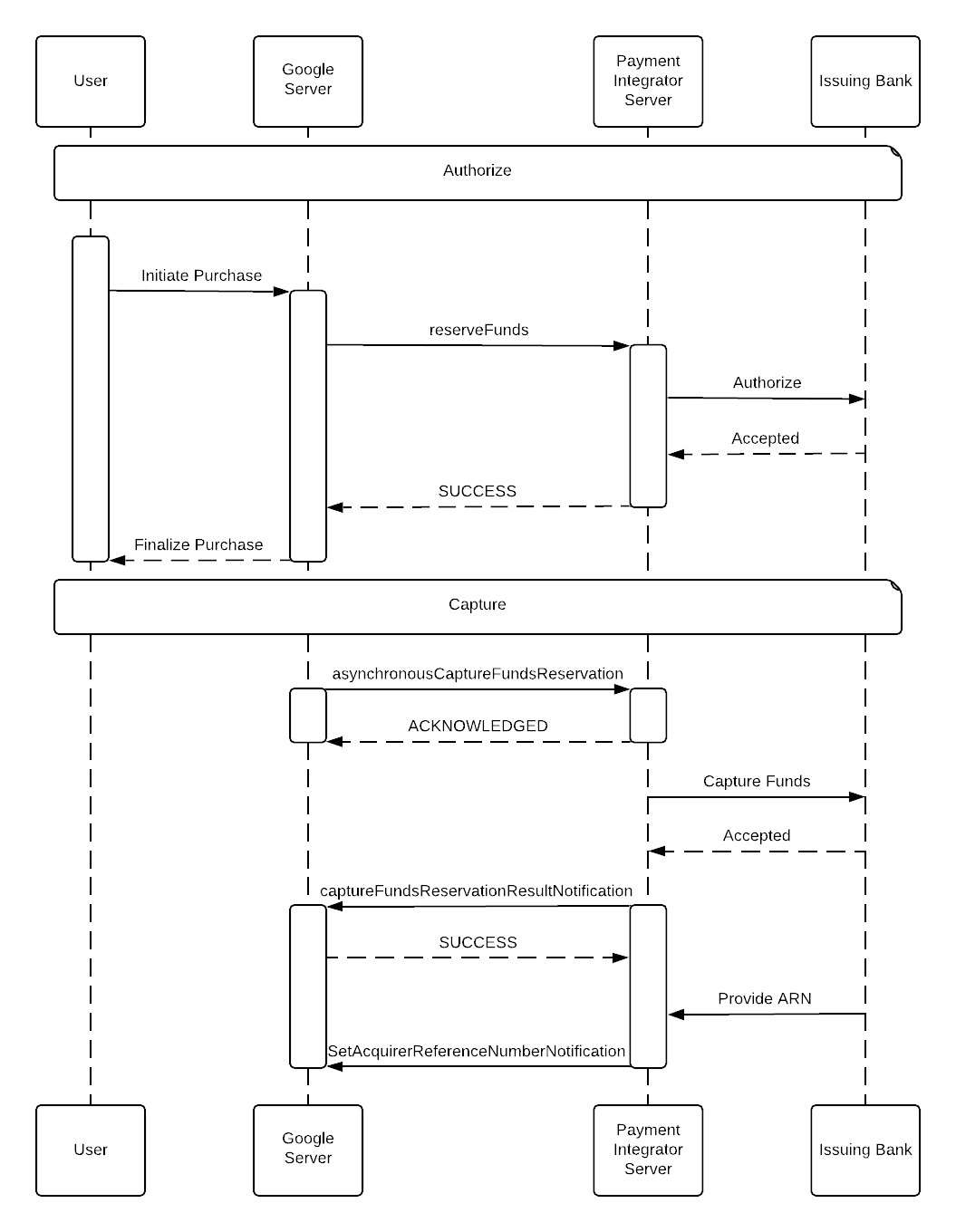Reserve Capture Flow
Stay organized with collections
Save and categorize content based on your preferences.
Reserve Capture Flow
Overview
The reserve capture flow is used to handle payments using dual message communication. The funds are first reserved through a call to the Payment Integrator hosted reserveFunds method. If this method synchronously returns SUCCESS it means that the funds are reserved and can be captured or released. This step is commonly known as an performing an Auth or Authorization.
Capture funds reservation
The funds can be captured by a call to asynchronousCaptureFundsReservation. This will start the process of moving the funds into Google's account. 
Cancel funds reservation
Alternatively, the reservation of funds can be canceled with a call to asynchronousCancelFundsReservation. This frees the hold on the funds. If a reservation is canceled there is no money movement. Reservations are automatically canceled after a fixed period of time, typically seven days. 
Acquirer reference number
If the funds are captured, a ARN (Acquirer Reference Number) is generated. That value is usually not known to the Payment Integrator until a few days later. Once the value is known, the Payment Integrator must call the Google hosted setAcquirerReferenceNumberForCaptureNotification
Subsequent operations
If the funds are captured, the payment may be refunded by Google with a call to the Payment Integrator hosted asynchronousRefund method. Alternatively, the user or issuing bank can start the chargeback process which is handled through the dispute flow.
All rights reserved. Java is a registered trademark of Oracle and/or its affiliates.
Last updated 2024-10-16 UTC.
[[["Easy to understand","easyToUnderstand","thumb-up"],["Solved my problem","solvedMyProblem","thumb-up"],["Other","otherUp","thumb-up"]],[["Missing the information I need","missingTheInformationINeed","thumb-down"],["Too complicated / too many steps","tooComplicatedTooManySteps","thumb-down"],["Out of date","outOfDate","thumb-down"],["Samples / code issue","samplesCodeIssue","thumb-down"],["Other","otherDown","thumb-down"]],["Last updated 2024-10-16 UTC."],[[["The reserve capture flow utilizes a two-step process: reserving funds (authorization) and then capturing them to complete the payment."],["Funds can be captured using `asynchronousCaptureFundsReservation` or released using `asynchronousCancelFundsReservation` if the transaction is canceled."],["After capture, an Acquirer Reference Number (ARN) is generated and should be provided to Google via `setAcquirerReferenceNumberForCaptureNotification` for dispute and fraud management."],["Captured payments can be refunded using `asynchronousRefund` or may undergo chargebacks handled through the dispute flow."],["Reservations automatically expire after a set period, typically seven days, if not captured or canceled."]]],["The reserve capture flow involves reserving funds via the `reserveFunds` method. Successful reservation allows for capturing funds using `asynchronousCaptureFundsReservation`, which moves funds to Google's account. Alternatively, `asynchronousCancelFundsReservation` releases the hold, with automatic cancellation after a set period. Upon capture, an Acquirer Reference Number (ARN) is generated, to be provided to Google through `setAcquirerReferenceNumberForCaptureNotification`. Captured payments can be refunded through `asynchronousRefund`, or face chargebacks via the dispute flow.\n"]]

